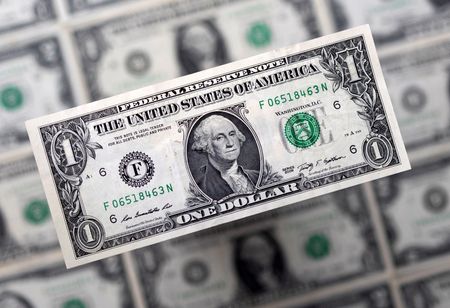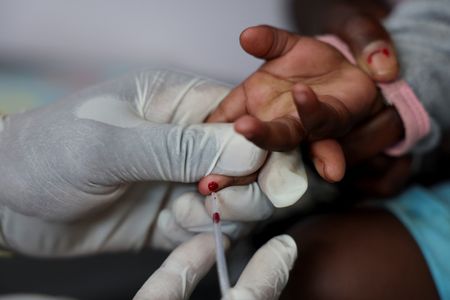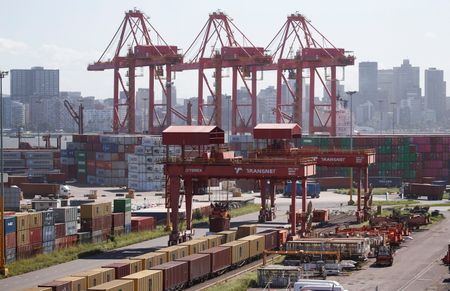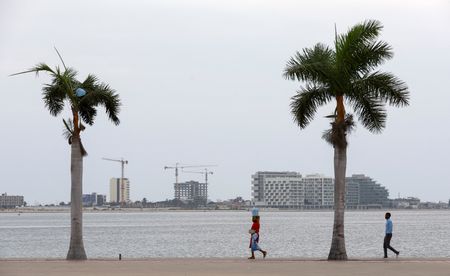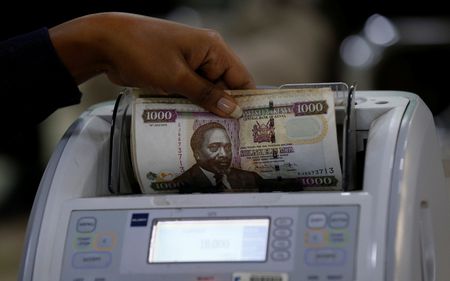By Chuck Mikolajczak
NEW YORK (Reuters) -The U.S. dollar fell against the majority of its peers on Thursday after a flurry of economic data, including a gauge of consumer health that showed retail spending slowed in April as an uncertain economic outlook weighed on sentiment.
The Commerce Department said retail sales edged up 0.1% last month after an upwardly revised 1.7% surge in March, compared with the expectation of economists polled by Reuters to remain unchanged after a previously reported 1.5% jump in March.
The boost in March was due in part to purchases of items such as automobiles being pulled forward ahead of U.S. President Donald Trump’s April 2 tariff announcement.
In a separate report, the Labor Department said the producer price index (PPI) for final demand dropped 0.5% last month after an upwardly revised unchanged reading in March.
It was pulled down by waning demand for air travel and hotel accommodation as Trump’s protectionist trade policy, immigration crackdown as well as references to Canada as the 51st state and a desire to acquire Greenland have contributed to a sharp drop in tourist travel.
However, other data from the Labor Department showed weekly initial jobless claims held steady at 229,000, in line with expectations of economists polled by Reuters, although job openings have become more limited.
“I have a suspicion that this is not just about tariffs, I have a suspicion that there’s an underlying tone of weakness in the U.S. consumer,” said Thierry Wizman, global FX and rates strategist at Macquarie in New York.
“It is the tariffs, but it’s also the underlying weakness among U.S. consumers at this point and Q2 will be a weak quarter for growth, given that we came into it with poor sentiment and a lot of uncertainty around policy. And it has not been completely resolved yet, despite what we did with China last weekend.”
The dollar index, which measures the greenback against a basket of currencies, fell 0.25% to 100.75, with the euro up 0.27% at $1.1204.
The greenback started the week with a surge of more than 1% Monday after the United States and China announced a 90-day pause on most of the tariffs imposed on each other’s goods since early April, easing fears of a global recession.
In light of the easing trade tensions, markets have dialed back expectations for rate cuts from the U.S. Federal Reserve this year, pricing in a 75.4% chance for the first cut of at least 25 basis points (bps) at the central bank’s September meeting, according to LSEG data. The prior view was for a likely cut in July.
Recent comments from Fed officials have indicated the central bank needs more data to determine the impact of the tariff announcements on prices and the economy before adjusting policy.
In comments on Thursday, Fed Chair Jerome Powell did not focus on monetary policy or the economic outlook, but said central bank officials feel they need to reconsider the key elements around jobs and inflation in their approach to monetary policy given the inflation experience of the last few years.
Against the Japanese yen, the dollar weakened 0.67% to 145.77 while sterling strengthened 0.28% to $1.3296 after Britain’s economy grew more strongly than expected in early 2025.
As trade tensions seem to have been temporarily defused, several major brokerages, including Goldman Sachs, JPMorgan and Barclays, scaled back their U.S. recession forecasts and their view of Fed policy easing this week.
(Reporting by Chuck Mikolajczak, additional reporting by Ankur Banerjee in Tokyo and Medha Singh in Bengaluru, editing by Ed Osmond)

